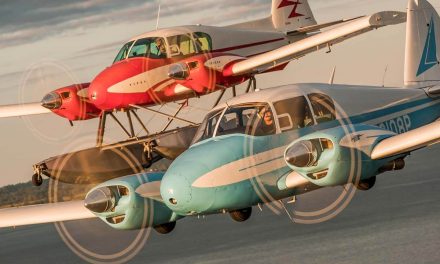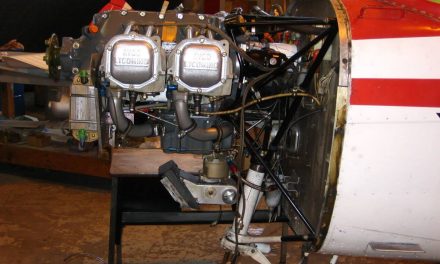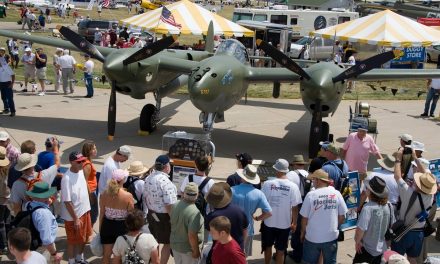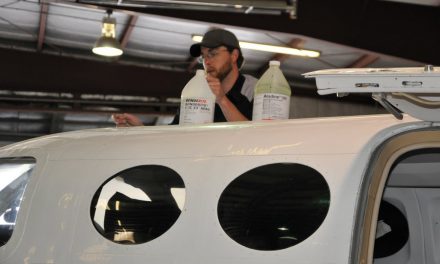A True Story by Richard Bogert
“Aviation in itself is not inherently dangerous. But to an even greater degree than the sea, it is terribly unforgiving of any carelessness, incapacity, or neglect.”
Captain A.G. Lamplugh, Feb 29, 2016
Yakima Washington was hot that day in 1975. It gets hot in Eastern Washington in the summer. The skies were clear. It was a CAVU day or “ceilings and visibility unlimited.” Only a faint breeze could be felt on my sweaty neck. I was 24 and a new A&P. An A&P is an aircraft mechanic that is rated for Airframes and Power plants. My job was with Yakima Flight and Service Center working on General Aviation aircraft. It was an interesting place to work. My boss had been a college professor in an aviation maintenance program. He was a smart guy and creative but a poor businessman.
This day, I had completed a cylinder exchange on the engine of a Cessna 175. The GO-300 Continental engine is a bit of an odd duck. It was a 6 cylinder, flat opposed, carbureted, air cooled and geared engine. I was familiar with them because I had owned one of these airplanes myself. I did a quick ground run of the engine to check for leaks. Everything seemed normal and dry. The cowling was fit into place and the airplane was given a preflight inspection. The test flight and break-in of the new cylinders would be next.
Before everyone got so scared of liability and the insurance companies seemed to run everything, it was very common for the mechanic that worked on an airplane to take it out on a test flight. This way, the mechanic could confirm that all systems were operating correctly.
The cockpit was hot. I could feel the sweat running down my back. It will be more comfortable once I get some air moving. Master switch on and the gyros start spinning up.. Check the fuel gauges, mixture rich, fuel selector on both, one shot of primer, mags on both, yell “Clear Prop” out the window, press the starter button. The starter whines. The propeller blades rotate a few times and the engine roared to life. The instrument panel shook for a moment until the engine smoothed out. The windows were open, and a whiff of exhaust entered the cabin. Now that there was some air moving it felt much better. Once I get to altitude, things will be cooler. The temperature will drop about three and a half degrees per thousand feet of altitude.
It would be a short taxi to runway two seven. “Yakima ground, Cessna Eight One Eight Seven Tango at Yakima Flight and Service Center ready to taxi to the active.”
“Cessna Eight Seven Tango, you are cleared to taxi to two seven. Hold short for traffic, contact the tower on 133.25.”
“Roger, Roger, Eight Seven Tango.”
The plane rolled along bobbing a bit as it moved slowly across the cracks in the asphalt to the run-up area near the active. The brakes were set. It was time for “CIGAR” the pre takeoff check. Controls check. Instruments check. GAS Check. Attitude Check. Run-up Check. I set the flaps at 10 degrees.
The airliner I had been holding for had landed.
“Yakima Tower, Eight Seven Tango is ready to takeoff. Requesting a climb out over the field for a test flight.”
“Cessna Eight Seven Tango, you are cleared for take-off. Make left departure. You are cleared to climb over the airport area.”
Releasing the brakes, the nose bobbed up a bit as I pulled out onto runway two seven. The white center stripe seemed to go on forever. I was not going to need much of it. I would be off the ground in a hundred yards or so and climbing out at 800 feet per minute. I was breaking in new cylinders, and it was important to keep my airspeed up for maximum engine cooling. At full throttle for maximum pressure and 140 mph for better cooling, the engine sounded and felt like it was doing what it was supposed to do. I was about 3000 feet above the field before I made my first turn back toward the airport.
Rolling into a left turn, the plane banked smoothly, and the air was strangely calm for a hot day. Without a bang, pop or cough, the engine just quit. I was in glide mode.
Being pretty new as a mechanic, my confidence level was not very good yet. Having the engine quit on you right after I had worked on it made me question my abilities even more. It only took a second for me to start doubting myself. I continued my turn back toward the airport. As soon as I rolled the wings level, the engine roared to life as if nothing had happened. As long as it was running, I was going to put some more altitude in the bank. You can never have too much altitude in an emergency. Altitude and airspeed are your friends.
It is said that the purpose of the propeller is to keep the pilot cool. If it stops turning, the pilot will begin to sweat.
“Yakima Tower, Cessna Eight Seven Tango, I have a mechanical issue. My engine quit on me, and I am returning to the airport.”
“Cessna Eight Seven Tango, no traffic. Winds are calm. Altimeter is two niner niner two. Cleared to land any runway you like.”
“Roger Roger, Eight Seven Tango.”
The engine was running strong, so I rolled into another turn, and I was met with the deafening sound of the engine quitting on me again. Rolling out of the turn, power surged. Trying a shallow turn, the engine kept running. This is good! As long as I keep my turns shallow, the engine will keep running.
Holding a high approach angle for insurance, I could put the airplane anywhere I wanted. Holding left aileron and right rudder and a little down elevator I could come down like a freight elevator. I slipped over the approach end of runway two seven with more than a mile of runway ahead of me. Flaps were extended to 40 degrees. The plane settled softly toward the asphalt. The flair came, followed by a little chirp of the tires. The landing was without incident.
“Cessna eight seven Tango exit at alpha or bravo your choice. Taxi to parking,”
“Yakima tower, Cessna Eight Seven Tango, thank you for your assistance.”
It was a good day. It is said that any landing you can walk away from is a good one. I was not really in any danger.
Obviously, it was not my workmanship that was at fault. Something else was definitely wrong though. I pulled the engine cowling. No leaks, no drips, no errors to speak of. I found a quart mason jar in the shop, and I pulled the drain plug in the bottom of the carburetor. Red aviation fuel and a white blob emptied into the jar. I knew what it was. The white blob was water. It was good old H2O. Water had gotten past the filter that was supposed to catch it and it ended up in the carburetor. When I rolled into a banked turn, the glob of water rolled over to block the fuel jets and the engine didn’t get any fuel. It’s kind of like drinking a strawberry milkshake and getting the straw plugged with a chunk of berry.
That was a painless lesson that taught me not to rely on the water separator. As a result, I was able to save others from a similar or worse experience. All in all, it was just another day at the office.
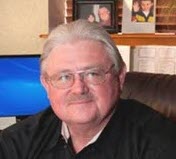
Richard Bogert started Bogert Aviation in Pasco, Washington, in 1983. The company offers a variety of parts for general aviation.


